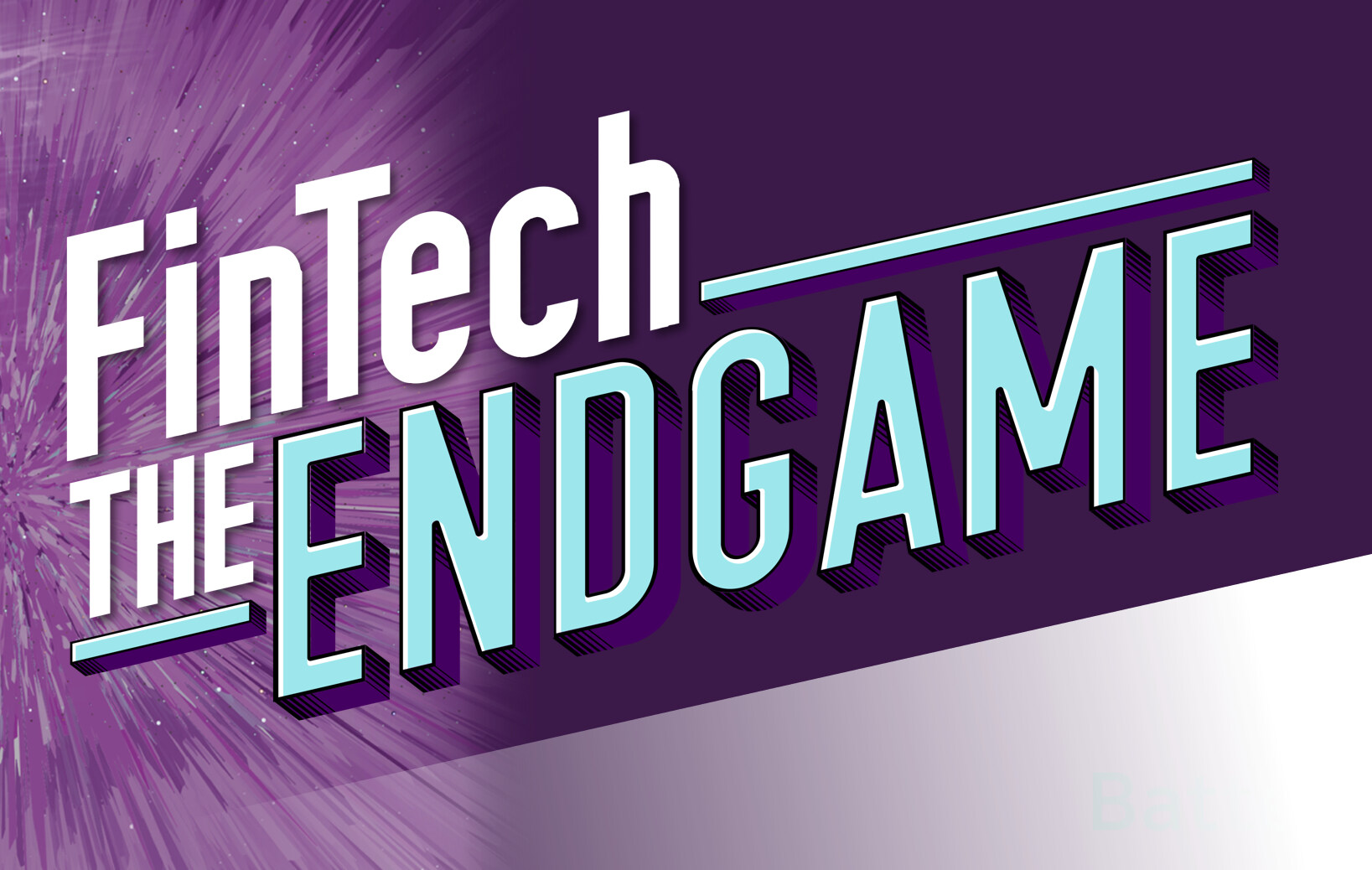Introduction
Welcome to the era of fintech, where technological advancements and innovations are transforming the way we handle our finances. Fintech, short for financial technology, refers to the integration of technology into traditional financial services, offering new and improved solutions for transactions, banking, investments, and more. As the world becomes increasingly digitized, the fintech industry has emerged as a powerful disruptor in the financial landscape.
Over the past decade, fintech companies have rapidly risen to prominence, challenging established financial institutions and reshaping the way we interact with money. With the rise of smartphones and the internet, these digital-first companies are leveraging technology to offer convenient, efficient, and accessible financial services to consumers around the globe.
One of the major battlegrounds for fintech companies is the race to dominate the digital payments sector. In a world that is fast transitioning from physical to digital transactions, the fight for supremacy in this arena is fierce, with players like PayPal, Square, Stripe, and many others vying for dominance.
At the heart of this battle lies the growing trend towards a cashless society. While physical cash has long been the standard medium of exchange, the advancements in digital payments and the growing popularity of mobile wallets and contactless transactions are challenging the relevance of traditional cash transactions.
In this article, we will explore the benefits and challenges of a cashless society and delve into the revolutionizing efforts of fintech companies in the war for dominance in digital payments. We will also discuss the potential endgame and implications of these developments on the future of financial transactions.
The Rise of Fintech Companies
Over the past decade, the fintech industry has witnessed exponential growth, reshaping the traditional financial landscape. Fueled by technological advancements, changing consumer preferences, and an increasing demand for seamless financial services, fintech companies have emerged as formidable players in the financial sector.
One of the key factors driving the rise of fintech companies is the prevalence of smartphones and the internet. These technologies have revolutionized the way we access information and connect with the world, and the financial industry is no exception. With smartphones becoming omnipresent, consumers now have a powerful tool at their fingertips to manage their finances and conduct transactions anytime, anywhere.
Fintech companies have harnessed this shift in consumer behavior by developing user-friendly mobile apps and digital platforms that offer a range of financial services. From banking and payments to investments and insurance, these companies provide convenient and accessible solutions that are often faster and more cost-effective than traditional financial institutions.
Furthermore, fintech companies have also capitalized on the opportunities presented by the rise of alternative lending. Traditional banks have long been known for their strict lending criteria and lengthy approval processes, leaving many individuals and businesses underserved. Fintech lenders, on the other hand, leverage big data and advanced algorithms to analyze creditworthiness, offering faster loan approvals and more flexible repayment options.
Another significant factor contributing to the rise of fintech companies is the growing distrust and dissatisfaction with traditional financial institutions. The global financial crisis of 2008 eroded public trust in banks and opened the door for disruptive fintech startups to challenge the status quo. These companies, often driven by a customer-centric approach, strive to provide transparent, fair, and inclusive financial services, addressing the pain points experienced by consumers.
Moreover, fintech companies have embraced emerging technologies such as blockchain, artificial intelligence (AI), and machine learning (ML) to enhance their offerings. Blockchain, in particular, has garnered attention for its potential to revolutionize processes such as cross-border payments and identity verification, improving security, efficiency, and cost-effectiveness.
In summary, the rise of fintech companies can be attributed to various factors, including the widespread adoption of smartphones, the demand for convenient and accessible financial services, the emergence of alternative lending, and the growing distrust in traditional financial institutions. With their innovative solutions and customer-centric approach, fintech companies are reshaping the financial landscape and driving the industry towards a more technologically-driven future.
The Battle for Digital Payments Supremacy
The rapid rise of fintech companies has ignited a fierce battle for supremacy in the realm of digital payments. As society becomes increasingly cashless, companies are scrambling to gain dominance in this lucrative market, offering innovative solutions to cater to the evolving needs of consumers.
One of the key players in this battle is PayPal, a pioneer in online payments. With its user-friendly platform and wide acceptance, PayPal has become a household name and a popular choice for online transactions. However, it now faces stiff competition from newer players like Square and Stripe, who are challenging its market share with innovative features and integration with various digital platforms.
Square, for instance, not only offers payment processing solutions but also provides a comprehensive suite of services tailored to small businesses. From point-of-sale systems to inventory management and invoicing, Square has positioned itself as a one-stop-shop for merchants, capturing a significant share of the market.
Similarly, Stripe has gained traction with its developer-friendly approach, providing easy integration with websites and applications. By streamlining the payment process and offering robust security features, Stripe has become a preferred choice for businesses seeking a seamless payment experience.
Mobile wallets have also emerged as a battleground in the battle for digital payments supremacy. Companies such as Apple, Google, and Samsung have developed their own mobile wallet solutions, capitalizing on the widespread adoption of smartphones. These wallets allow users to store their payment information securely and make contactless payments with a simple tap of their phone.
Additionally, peer-to-peer payment apps have gained popularity, enabling individuals to send and receive money effortlessly. Apps like Venmo and Cash App have become social payment platforms, allowing users to split bills, request money from friends, and even make casual payments for shared expenses.
The battle for digital payments supremacy extends beyond traditional financial players. Tech giants such as Amazon and Facebook are also entering the fray, leveraging their massive user bases and vast ecosystems to compete in the digital payments space. Amazon Pay and Facebook Pay seek to provide seamless payment options within their respective platforms, further intensifying the competition.
As the battle rages on, customer experience and convenience are paramount. Companies are investing in user-friendly interfaces, fast and secure transactions, and seamless integrations with popular apps and websites. The goal is to establish trust and loyalty among consumers, ensuring that their digital payment needs are met with ease and efficiency.
Overall, the battle for digital payments supremacy is reshaping the way we transact and is driven by a desire to provide the most convenient and innovative payment solutions. From traditional players like PayPal to disruptive newcomers like Square and Stripe, the competition is fierce, and the ultimate winners will be determined by their ability to adapt to evolving technologies and meet the ever-changing demands of consumers.
Cash: The Relic of the Past
Once a staple of our daily lives, physical cash is slowly becoming a relic of the past. As digital payments gain traction and technologies evolve, the use of traditional currency is on the decline. The convenience, security, and efficiency offered by digital alternatives are pushing cash to the fringes of our modern financial landscape.
While cash has historical and cultural significance, it comes with inherent limitations. Physical currency can be easily lost, stolen, or damaged, leading to financial loss for individuals. Counting and handling cash also require time and resources, which can be cumbersome for businesses. Additionally, the spread of germs through handling physical money has become a concern, especially in the wake of the COVID-19 pandemic.
On the other hand, digital payments offer numerous advantages over cash transactions. Electronic payments, such as credit cards, mobile wallets, and online banking, provide convenience and speed. With just a few taps or clicks, individuals can make payments for purchases, bills, and services from the comfort of their homes or on the go.
Furthermore, digital payments offer enhanced security. Traditional cash transactions can be prone to theft, counterfeit currency, and fraud. Digital payment methods, on the other hand, employ encryption, two-factor authentication, and other security measures to protect sensitive information and prevent unauthorized access to funds.
In addition to convenience and security, digital payments also enable seamless integration with other financial tools and services. Online shopping, budgeting apps, and money management platforms all rely on digital payment methods to provide users with a comprehensive and streamlined financial experience.
Another factor driving the decline of cash is the increasing acceptance of electronic payments by businesses and institutions. From small local merchants to multinational corporations, a wider range of establishments are now equipped with digital payment terminals. Contactless payment options, such as NFC-enabled cards and mobile wallets, have also gained popularity, making transactions faster and more efficient.
It’s worth noting that the phasing out of cash does not mean the complete elimination of physical currency. Cash will likely continue to have a role in certain situations, such as emergencies or in areas with limited internet access. However, its mainstream usage is steadily decreasing as the advantages of digital payments become more apparent.
In summary, cash is becoming a relic of the past as digital payments offer greater convenience, security, and efficiency. The widespread adoption of electronic payment methods, the integration with other financial services, and the acceptance by businesses are driving the shift towards a cashless society. While physical currency may never fully disappear, its use is diminishing as digital alternatives pave the way for a more seamless and technologically-driven financial landscape.
The Benefits of a Cashless Society
A cashless society, where digital payments replace physical currency, offers a range of benefits that contribute to a more efficient, secure, and inclusive financial ecosystem. As technology continues to advance and our reliance on digital transactions grows, these advantages become increasingly evident.
One of the primary benefits of a cashless society is the convenience it brings. Gone are the days of fumbling for change or carrying wads of cash. With digital payment methods like credit and debit cards, mobile wallets, and online banking, transactions can be completed swiftly and effortlessly. Whether making purchases in-store, paying bills online, or transferring money to friends and family, the ease of digital payments streamlines financial interactions and saves valuable time.
Digital payments also offer enhanced security compared to physical cash. Cash can be easily lost or stolen, with little chance of recovery. In contrast, digital payment methods employ encryption, secure authentication protocols, and fraud detection systems that provide layers of protection for both consumers and businesses. This reduces the risk of theft and fraudulent activity, providing peace of mind in financial transactions.
A cashless society also promotes financial inclusion. Traditional banking services can be inaccessible to marginalized communities or individuals without proper identification or credit history. By embracing digital payments, financial inclusion can be expanded. Mobile wallets and peer-to-peer payment apps allow unbanked or underbanked individuals to participate in the digital economy, enabling them to receive payments, make purchases, and access essential financial services.
Additionally, a cashless society reduces the reliance on physical infrastructure associated with cash transactions. From printing and distributing banknotes to operating ATMs and cash handling equipment, the costs and resources required for managing physical currency are significant. By transitioning to digital payments, the need for these infrastructure investments is reduced, freeing up resources that can be allocated to other areas of social and economic development.
From a macroeconomic perspective, a cashless society has the potential to combat issues such as tax evasion and the underground economy. Digital payments leave a digital trail, making it easier for governments to track financial flows and ensure tax compliance. This can contribute to increased tax revenue, which can be directed towards public services and infrastructure development.
Lastly, the environmental benefits of a cashless society should not be overlooked. The production and disposal of paper currency have significant environmental impacts, including deforestation, energy consumption, and waste generation. By reducing the usage of physical cash, we can minimize our ecological footprint and move towards a more sustainable future.
In summary, a cashless society offers convenience, security, financial inclusion, cost savings, improved tax compliance, and environmental sustainability. As digital payment solutions continue to evolve and gain acceptance, these benefits are driving the transition towards a cashless future, where financial transactions are seamless, efficient, and accessible to all.
The Challenges of a Cashless Society
While the transition to a cashless society offers numerous benefits, it is not without its challenges. As digital payments become more prevalent, several hurdles must be addressed to ensure a smooth and inclusive transition for all individuals and businesses.
One of the primary challenges of a cashless society is the issue of digital divide and accessibility. While technology adoption is increasing globally, there are still individuals, particularly in rural and low-income communities, who lack access to digital devices and stable internet connectivity. Without proper infrastructure and access to digital payment methods, these individuals may face exclusion from financial transactions and services, exacerbating existing inequalities.
Another challenge is the risk of cybersecurity threats and data breaches. As more transactions are conducted digitally, the potential for sensitive information, such as payment details and personal data, to be compromised increases. It is crucial for companies and individuals to prioritize cybersecurity measures, including robust encryption, secure authentication, and regular updates to protect against cyber threats and maintain trust in digital payment systems.
In tandem with cybersecurity concerns, issues related to privacy and data protection arise in a cashless society. The collection and use of personal financial data by financial institutions, payment processors, and other entities necessitate stringent regulations to protect individuals’ privacy rights. Striking a balance between convenience and privacy is essential to ensure consumer trust and mitigate the risks posed by the use of personal data.
Moreover, reliance on digital payment methods introduces dependency on technology. System failures, power outages, and connectivity issues can disrupt digital transactions, leaving individuals temporarily unable to make payments. It is essential to have backup solutions and alternative methods available to ensure uninterrupted access to financial services during these instances.
Notably, the transition to a cashless society raises concerns regarding financial inclusion. While digital payments have the potential to provide access to financial services for the unbanked and underbanked populations, individuals without access to smartphones, internet, or traditional banking services may be left behind. Efforts must be made to bridge this gap through increased access to affordable digital infrastructure and financial education.
Lastly, cultural and psychological factors play a role in the adoption of a cashless society. Some individuals may have a preference for cash due to the tangibility and sense of control it provides. Others may have concerns about surveillance or lack trust in digital payment systems. Addressing these concerns through education, transparent policies, and proper regulation can help alleviate resistance to the transition.
As we navigate the challenges of a cashless society, it is crucial to consider the needs and concerns of all segments of society. Balancing the benefits of digital payments with the need for inclusivity, cybersecurity, privacy, and infrastructure development will be key to ensuring a successful and equitable transition to a cashless future.
The Fintech War: Revolutionizing Cashless Payments
In the race for dominance in the cashless payments sector, fintech companies are at the forefront of driving innovation and revolutionizing the way we conduct transactions. With their agile nature and focus on technological advancements, these companies are reshaping the financial landscape and challenging traditional financial institutions.
Fintech companies are leveraging advancements in mobile technology, data analytics, and cloud computing to create seamless and user-friendly payment solutions. Mobile wallets, such as Apple Pay, Google Pay, and Samsung Pay, allow users to store their payment information securely and make quick and convenient contactless payments with a simple tap of their smartphones.
Peer-to-peer payment apps, like Venmo and Cash App, have transformed the way individuals transfer money to one another. These apps enable users to split bills, request money, and make casual payments, all with ease and convenience. The social aspect of these apps further enhances the user experience, providing a more engaging and personalized payment solution.
Furthermore, fintech companies are driving the adoption of contactless payments through the use of near-field communication (NFC) technology. NFC-enabled cards and mobile wallets allow users to make secure, tap-and-go payments, eliminating the need for physical card swipes or pin entry. The speed and convenience offered by contactless payments have propelled their popularity and acceptance among merchants worldwide.
Additionally, fintech companies are exploring the potential of emerging technologies like blockchain and cryptocurrencies to revolutionize cashless payments. Blockchain technology can provide secure and transparent transactions, eliminating the need for intermediaries and reducing processing times. Cryptocurrencies, such as Bitcoin and Ethereum, offer decentralized digital currencies that can be used for peer-to-peer transactions, bypassing traditional financial systems.
Moreover, fintech companies are focusing on enhancing the overall payment experience. They are developing innovative features such as loyalty programs, rewards systems, and automated expense tracking, providing added value to users beyond the simple act of making payments. By integrating these features into their platforms, fintech companies create a seamless ecosystem that improves user engagement and cultivates customer loyalty.
As the fintech war intensifies, traditional financial institutions are not sitting idly by. Banks and credit card companies are investing heavily in digital payment solutions and partnering with fintech startups to stay competitive in the evolving landscape. This collaboration between established institutions and disruptive fintech companies is driving the rapid evolution of cashless payments.
Regulatory bodies also play a crucial role in shaping the fintech revolution. Governments around the world are recognizing the potential benefits of cashless payments and are implementing regulations to foster innovation while ensuring consumer protection and financial stability.
In summary, the fintech revolution is propelling the transformation of cashless payments. Through their innovative solutions, user-friendly interfaces, and integration of emerging technologies, fintech companies are redefining the way we make transactions. The competition between traditional financial institutions and fintech disruptors is driving advancements in technology and benefiting consumers with a wider range of convenient, secure, and personalized payment options.
The Endgame of the Fintech War
As the fintech war for dominance in digital payments continues to unfold, the endgame remains uncertain. The evolving landscape and the rapid pace of technological advancements make it challenging to predict the ultimate outcome of this battle. However, several potential scenarios may emerge as the endgame approaches.
One possible endgame is the consolidation of the fintech industry. As competition intensifies, smaller fintech startups may be acquired or absorbed by larger players seeking to expand their market share and capabilities. This consolidation would result in a smaller number of dominant players who have the resources and infrastructure to deliver comprehensive and innovative payment solutions.
Another potential endgame is the convergence of fintech and traditional financial institutions. While fintech companies have disrupted the financial industry, traditional banks and credit card companies have also embraced digital payments and are investing in their own technological advancements. This convergence may lead to collaborations and partnerships between fintech startups and established financial institutions, combining the agility of startups with the scale and customer base of traditional players.
Furthermore, the endgame may involve a greater focus on global interoperability. Currently, there are multiple digital payment platforms, mobile wallets, and peer-to-peer apps operating independently. The industry may see a push for standardized protocols and increased cooperation to enable seamless cross-platform transactions, allowing users to make payments across different systems or platforms effortlessly.
Regulatory frameworks will also shape the endgame of the fintech war. Governments and regulatory bodies play a crucial role in fostering innovation, while ensuring consumer protection and financial stability. Striking the right balance between competition and regulation will be critical to facilitate the growth of the industry and create a level playing field for fintech companies and traditional financial institutions.
Additionally, the endgame may witness the widespread adoption of emerging technologies such as blockchain and decentralized finance (DeFi). As these technologies mature, they have the potential to disrupt traditional financial systems by enabling peer-to-peer transactions, reducing reliance on intermediaries, and ensuring greater transparency and security.
Lastly, customer preferences and adoption will ultimately shape the endgame. The success of fintech companies and digital payment solutions depends on user acceptance and trust. Consumer demands for convenience, security, and personalized experiences will continue to influence the direction of the industry. Fintech companies that can effectively address these needs and deliver exceptional user experiences will be well-positioned to thrive in the endgame.
In summary, the endgame of the fintech war is multifaceted and dynamic. It may involve consolidation, convergence, global interoperability, regulatory frameworks, the adoption of emerging technologies, and the preferences of users. As the battle for dominance in digital payments continues, the future will be shaped by a combination of market forces, technological advancements, and regulatory developments that will redefine the financial landscape and transform the way we make transactions.
Conclusion
The rise of fintech companies has ushered in a new era of digital payments, challenging the dominance of traditional financial institutions and revolutionizing the way we conduct transactions. As we navigate the transition towards a cashless society, it is clear that digital payments offer numerous benefits, including convenience, security, financial inclusion, and cost savings.
However, this transformation is not without its challenges. Bridging the digital divide, ensuring cybersecurity and data privacy, addressing infrastructure limitations, and maintaining inclusivity are some of the hurdles that need to be overcome to ensure a smooth transition for all individuals and businesses.
The fintech war for dominance in digital payments continues to intensify, with players vying to offer the most innovative and user-friendly solutions. As the battle unfolds, it is crucial to strike a balance between competition and collaboration, allowing for consolidation, convergence, and global interoperability that benefit both consumers and businesses.
The endgame of the fintech war remains uncertain. Various scenarios could unfold, including industry consolidation, partnerships between fintech startups and traditional financial institutions, global interoperability, increased adoption of emerging technologies like blockchain and DeFi, and the influence of regulatory frameworks.
Ultimately, the endgame will be shaped by customer preferences and adoption. Fintech companies that prioritize the needs of their users, deliver exceptional user experiences, and build trust will likely thrive in the cashless future.
In conclusion, the fintech revolution is transforming the world of cashless payments, offering a more seamless, efficient, and inclusive financial ecosystem. As we embrace the benefits of digital payments, it is essential to address the challenges, foster collaboration, and steer the industry towards a future where technology and innovation enhance our financial interactions and improve our lives.

























